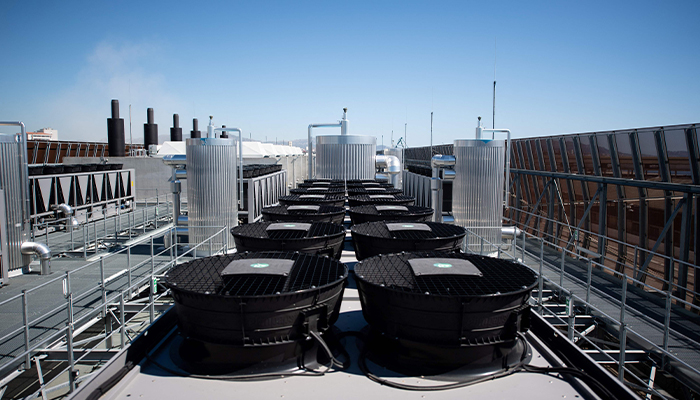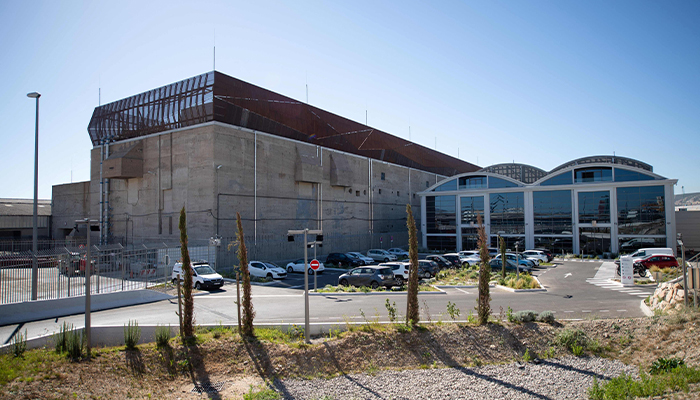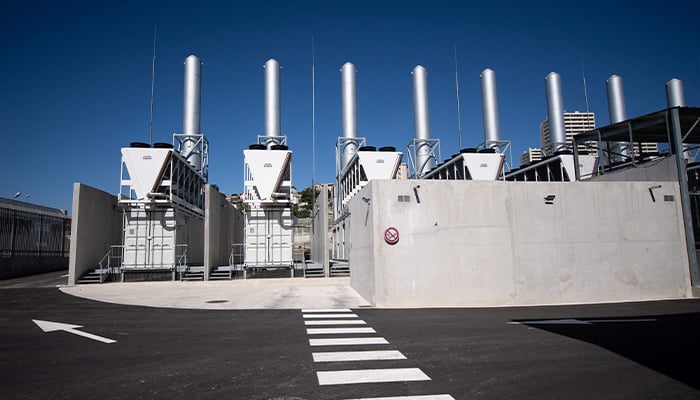Data centres chase water, energy savings as AI race ramps up
To cool the chips, many data centres turn to air conditioning or a water-evaporation system
February 01, 2025

MARSEILLE: Three data centres squatting alongside the cruise ships and freighters in French Mediterranean port Marseille are testing water-saving cooling methods by pumping out an old coal mine.
Efforts like these are under the spotlight as generative artificial intelligence (AI) consumes growing volumes of water, one of the environmental priorities for February's global AI summit in Paris.
The portside data centres "pump water at a rate of about 3,000 cubic metres (100,000 cubic feet) per hour", said Fabrice Coquio, president of their operator Digital Realty's French business.
Water keeping the banks of servers at optimal temperature is "unfit for human consumption [...] laden with minerals and particles," Coquio added.
Digital Realty counts major platforms, from Microsoft to Disney and TikTok, among clients for its processing and storage.
In recent months the Marseille site has seen installation of a supercomputer powering AI start-up Sesterce's operations.
Every door on the heavily secured site is opened by fingerprint scanner.
Available year-round at a steady 14°C (57°F), the coal mine water enters the server rooms' heat exchangers in a closed-loop system dubbed "river cooling".
The data centre's machines must be kept at 25°C and with atmospheric humidity of 60% to 80% for top performance, Coquio said.
Different class

"If the cooling system stops, any computer room will climb to 45°C within ten minutes," potentially halting work, he said.
"Cold is just as vital as the electrical socket powering the machines," Coquio added.
Digital Realty says its river cooling has all but eliminated the need for energy-hungry air conditioning, lowering the three data centres' consumption by 20%.
Exploiting such savings will be vital if use of generative AI and its attendant infrastructure grows in line with forecasts.
"The electrical densities our clients are asking for are in a different class than what we've been doing for the last 25 years," Coquio said.
AI chips tend to be more powerful, consuming more energy and producing more heat than traditional processors.
Chipmaker Nvidia's latest hardware is like a "radiator", clocking in at "several hundred watts" of power usage, said Jacques Sainte-Marie, director of the environment programme at France's INRIA computing research institute.
To cool all these chips, many data centres still turn to air conditioning or a water-evaporation system known as adiabatic cooling, in use at Microsoft among others.
Contested cooling

Water usage is a major environmental challenge for the AI sector, alongside consumption of power and raw materials.
Google's data centres used 14% more water in 2023 than the year before to reach 24 million cubic metres — enough to fill 9,600 Olympic swimming pools to a depth of two metres (6'6") — while Microsoft's surged 22%.
Alternative cooling methods include ambient air cooling, used by Microsoft in northern Europe and by Digital Realty, French operator Data4 and others.
"Our water strategy is localised and specific to the areas that we operate in, because there's different requirements" depending on the site, said Alistair Speirs, infrastructure chief at Microsoft's Azure cloud-computing arm.
Microsoft is even experimenting with immersing computer components in a coolant that carries heat away but does not damage the parts as water would.
It is not deploying the method widely because "the chemicals that exist to do this right now generally have a high PFAS quotient," Speirs said, referring to so-called "forever chemicals" that have made headlines in recent years as widespread pollutants.
But even methods touted as green alternatives can meet resistance.
In Marseille, the city government and a local campaign group have blasted Digital Realty for monopolising water they say could be used in other ways.
The water "can't be drunk directly, but it could be used to relaunch local agriculture projects, clean streets, water parks," said campaigner Antoine Devillet.
While data centre cooling is getting better, companies could still use that for "greenwashing", he said
"You have to look at the whole production chain, from ores to chips, with huge consumption of electricity, water and sometimes rare raw materials at each step," he said.











